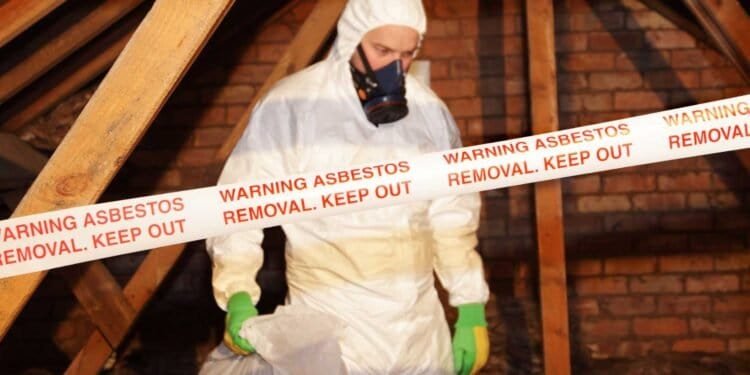Mesothelioma is a rare and aggressive form of cancer that affects the mesothelium, a thin layer of tissue that lines the lungs, chest wall, and abdomen. The primary cause of mesothelioma is exposure to asbestos, a naturally occurring mineral that was widely used in construction, shipbuilding, and other industries throughout the 20th century. While asbestos use has declined in recent decades, mesothelioma remains a significant public health concern, with thousands of new cases diagnosed each year.

Understanding mesothelioma and its link to asbestos is essential for patients, families, and healthcare providers. Mesothelioma can be difficult to diagnose and treat, and many patients face significant challenges in managing their symptoms and maintaining their quality of life. By exploring the latest research on mesothelioma and asbestos, as well as the available treatment options and support resources, patients can make informed decisions about their care and take steps to improve their outcomes.
Key Takeaways
- Mesothelioma is a rare and aggressive form of cancer that primarily affects the lining of the lungs, chest wall, and abdomen.
- The primary cause of mesothelioma is exposure to asbestos, a naturally occurring mineral that was widely used in construction, shipbuilding, and other industries throughout the 20th century.
- Understanding mesothelioma and its link to asbestos is essential for patients, families, and healthcare providers. By exploring the latest research on mesothelioma and asbestos, as well as the available treatment options and support resources, patients can make informed decisions about their care and take steps to improve their outcomes.
Understanding Mesothelioma

Mesothelioma is a rare and aggressive form of cancer that develops in the thin layer of tissue (mesothelium) that covers the lungs, chest wall, and abdomen. It is primarily caused by exposure to asbestos, a naturally occurring mineral that was widely used in construction, shipbuilding, and other industries until the 1970s.
Types of Mesothelioma
There are three main types of mesothelioma, classified according to the location of the cancer in the body. The most common type is pleural mesothelioma, which affects the lining of the lungs. Peritoneal mesothelioma affects the lining of the abdomen, while pericardial mesothelioma affects the lining of the heart.
Symptoms and Early Detection
The symptoms of mesothelioma can vary depending on the type and stage of the cancer. Common symptoms of pleural mesothelioma include shortness of breath, chest pain, and persistent cough. Peritoneal mesothelioma can cause abdominal pain, swelling, and digestive issues. Unfortunately, mesothelioma symptoms can take decades to appear after exposure to asbestos, making early detection difficult.
Risk Factors and Causes
Exposure to asbestos is the primary risk factor for mesothelioma. The risk of developing mesothelioma increases with the duration and intensity of asbestos exposure. Other risk factors include age, sex, and family history of mesothelioma. Men are more likely to develop mesothelioma than women, and the risk of developing mesothelioma increases with age.
In conclusion, understanding mesothelioma is crucial for supporting patients and preventing future cases. By recognizing the risk factors, symptoms, and types of mesothelioma, patients and their loved ones can make informed decisions about their health and seek early detection and treatment.
The Asbestos Connection

Asbestos is a naturally occurring mineral that was widely used in construction, insulation, and other products due to its heat-resistant properties. However, exposure to asbestos fibers has been linked to serious health risks, including mesothelioma, a rare and aggressive form of cancer that affects the lining of the lungs, abdomen, and other organs.
Asbestos Exposure and Health Risks
Asbestos exposure occurs when asbestos fibers are inhaled or ingested, often as a result of working with or around asbestos-containing materials. According to a study published in the Journal of Thoracic Disease, “the risk of mesothelioma increases with the amount of asbestos exposure, the duration of exposure, and the type of asbestos fibers involved.
In addition to mesothelioma, asbestos exposure has been linked to other health risks, including lung cancer, asbestosis (a chronic lung disease), and other respiratory problems.
Historical Use of Asbestos
Asbestos was widely used in construction, insulation, and other products throughout the 20th century. It was particularly popular in the United States from the 1940s through the 1970s. According to the Environmental Protection Agency (EPA), “asbestos was used in more than 3,000 different products, including many building materials.”
Asbestos in the Environment
Asbestos fibers can also be found in the environment, particularly in areas near asbestos mines or processing plants. According to the Agency for Toxic Substances and Disease Registry (ATSDR), “asbestos fibers can be released into the air during mining and processing of asbestos-containing rock, or when asbestos-containing materials are disturbed or damaged.”
Although the use of asbestos has been banned or restricted in many countries, including the United States, it can still be found in many older buildings and products. Regulations and guidelines have been put in place to limit exposure to asbestos and protect workers and the public from its health risks.
Diagnosing Mesothelioma

Mesothelioma is a cancer that can be difficult to diagnose because its symptoms are similar to those of other diseases. However, early diagnosis is crucial for effective treatment. There are several diagnostic techniques used to identify mesothelioma, including physical examination, imaging tests, and biopsy.
Diagnostic Techniques
A physical examination is usually the first step in diagnosing mesothelioma. The doctor will check for any lumps or swelling in the chest or abdomen and listen to the patient’s breathing. Imaging tests like X-rays, CT scans, and MRI scans can help identify any abnormalities in the chest or abdomen. These tests can also help determine the size and location of any tumors.
Biopsy is the most definitive diagnostic technique for mesothelioma. In this procedure, a small tissue sample is taken from the affected area and examined under a microscope for cancer cells. There are different types of biopsies, including needle biopsy, thoracoscopy, and laparoscopy.
Staging and Prognosis
Once mesothelioma is diagnosed, the next step is to determine its stage and prognosis. Staging is the process of determining how advanced the cancer is and how much it has spread. The most common staging system for mesothelioma is the TNM staging system, which stands for Tumor, Node, and Metastasis.
Prognosis refers to the likely outcome of the disease. Unfortunately, mesothelioma is often diagnosed at an advanced stage, which can make treatment more difficult and lower the chances of survival. However, early diagnosis and treatment can improve the prognosis for some patients.
In summary, mesothelioma can be difficult to diagnose, but early detection is crucial for effective treatment. Diagnostic techniques include physical examination, imaging tests, and biopsy. Staging and prognosis are important factors to consider once mesothelioma is diagnosed.
Treatment Options

Mesothelioma treatment options vary depending on the stage of the disease, as well as the patient’s overall health. Here are some of the most common treatment options for mesothelioma:
Surgical Interventions
Surgery is often the first line of treatment for mesothelioma. The goal of surgery is to remove as much of the cancer as possible. The type of surgery used depends on the location of the cancer and how far it has spread. Some common types of surgery for mesothelioma include:
- Pleurectomy/decortication (P/D): This surgery removes the lining of the lung and chest wall where mesothelioma cells may be present.
- Extrapleural pneumonectomy (EPP): This surgery removes the entire lung, the lining of the lung, the diaphragm, and the lining of the chest wall.
Chemotherapy and Radiation
Chemotherapy and radiation therapy are often used in combination with surgery to kill any remaining cancer cells. Chemotherapy uses drugs to kill cancer cells, while radiation therapy uses high-energy radiation to destroy cancer cells. These treatments can be given before or after surgery.
Emerging Therapies
There are several emerging therapies being studied for mesothelioma treatment. These therapies include:
- Immunotherapy: This treatment uses the patient’s own immune system to fight cancer cells.
- Clinical Trials: Clinical trials are research studies that test new treatments for mesothelioma. These trials are conducted to determine if a new treatment is safe and effective.
- FDA-Approved Drugs: The FDA has approved several drugs for the treatment of mesothelioma, including pemetrexed and cisplatin.
- National Cancer Institute (NCI): The NCI is a government agency that conducts research on cancer. They offer information on mesothelioma treatment options and clinical trials.
It is important for patients to work closely with their healthcare team to determine the best treatment plan for their individual case.
Prevention and Risk Reduction

Mesothelioma is a rare but aggressive form of cancer that is linked to asbestos exposure. Although there is no cure for mesothelioma, prevention and risk reduction are key in reducing the number of people affected by this disease. There are several ways to reduce the risk of asbestos exposure, including avoiding asbestos-containing materials and following safety practices.
Avoiding Asbestos Exposure
The most effective way to prevent mesothelioma is to avoid exposure to asbestos. This can be achieved by identifying and avoiding asbestos-containing materials in the workplace and at home. Asbestos was commonly used in building materials such as insulation, roofing, and flooring in the past. Therefore, it is important to have a professional inspect older buildings for asbestos-containing materials before any renovations or construction work.
Individuals who work in industries that involve asbestos, such as asbestos miners, plumbers, and insulators, should take extra precautions to avoid exposure. Employers should provide protective equipment such as respirators and protective clothing to their workers. Workers should also be trained on how to properly handle and dispose of asbestos-containing materials.
Regulation and Safety Practices
Regulation and safety practices are also important in preventing mesothelioma. The Environmental Protection Agency (EPA) has established regulations to limit the use of asbestos in products and to reduce the risk of exposure to asbestos in the workplace. The Occupational Safety and Health Administration (OSHA) has also set standards for asbestos exposure in the workplace.
Employers should follow these regulations and provide a safe working environment for their employees. This includes providing training on how to identify and handle asbestos-containing materials, providing protective equipment, and properly disposing of asbestos-containing materials.
In conclusion, prevention and risk reduction are crucial in reducing the number of people affected by mesothelioma. Avoiding asbestos exposure and following safety practices can help reduce the risk of developing mesothelioma. Employers and individuals should take the necessary precautions to protect themselves and others from asbestos exposure.
Living with Mesothelioma

Mesothelioma is a rare and aggressive form of cancer that develops in the lining of the lungs, abdomen, or heart. It is caused by exposure to asbestos, a naturally occurring mineral that was widely used in construction and manufacturing until the 1970s. Unfortunately, there is no cure for mesothelioma, but treatment options are available to help manage symptoms and improve quality of life.
Managing Symptoms
Mesothelioma can cause a range of symptoms that can be difficult to manage. Some common symptoms include shortness of breath, chest pain, abdominal pain, nausea, coughing, and weight loss. Treatment options may include surgery, chemotherapy, radiation therapy, and immunotherapy. These treatments can help to shrink tumors, relieve pain, and improve breathing.
In addition to medical treatments, there are many things that patients can do to manage their symptoms and improve their quality of life. For example, patients may benefit from pulmonary rehabilitation, which involves exercises to improve breathing and lung function. Patients may also benefit from nutritional counseling to help them maintain a healthy weight and manage any digestive problems.
Support and Resources
Living with mesothelioma can be challenging, both physically and emotionally. Patients may feel overwhelmed by the diagnosis and the treatment process, and they may struggle with anxiety, depression, and other emotional issues. Fortunately, there are many resources available to help patients and their families cope with the challenges of mesothelioma.
Support groups can be a valuable resource for patients and their families. These groups provide an opportunity to connect with others who are going through similar experiences, share information and advice, and receive emotional support. There are many mesothelioma support groups available both online and in-person.
In addition to support groups, there are many other resources available to mesothelioma patients and their families. For example, the Mesothelioma Applied Research Foundation (MARF) provides information and resources about mesothelioma, including treatment options, clinical trials, and support services. The American Cancer Society (ACS) also provides information and resources about mesothelioma, including information about financial assistance programs and other resources for patients and their families.
In conclusion, living with mesothelioma can be challenging, but there are many resources available to help patients and their families cope with the challenges of this disease. By working with healthcare providers, participating in support groups, and accessing available resources, patients can manage their symptoms, improve their quality of life, and find the support they need to cope with this difficult diagnosis.
Research and Future Directions

Genetic and Molecular Research
Researchers are continuing to investigate the genetic and molecular mechanisms underlying mesothelioma. One promising area of research is the identification of genetic mutations that may increase susceptibility to mesothelioma. For example, mutations in the BAP1 gene have been linked to an increased risk of mesothelioma, particularly in individuals with a family history of the disease [1].
Other areas of genetic research include the study of chromothripsis, a phenomenon in which multiple chromosomal rearrangements occur in a single catastrophic event [2]. Additionally, researchers are investigating the role of proteins such as HMGB1 in mesothelioma development and progression [3].
Advancements in Treatment
Clinical trials continue to be a key area of research in mesothelioma treatment. One recent trial investigated the use of ferroptosis-inducing agents in combination with chemotherapy as a potential treatment option [4]. Another trial investigated the use of macrophages as a delivery system for chemotherapy drugs [5].
In addition to clinical trials, researchers are exploring new drug therapies for mesothelioma. For example, the chemotherapy drug pemetrexed has been shown to be effective in treating mesothelioma, but researchers are investigating ways to enhance its efficacy [6]. Immunotherapy and gene therapy are also promising areas of research for mesothelioma treatment.
Overall, the future of mesothelioma research looks promising as researchers continue to make progress in understanding the disease and developing new treatment options.
[1] Carbone, M., Yang, H., Pass, H. I., & Krausz, T. (2019). Testicular mesothelioma: a case report and review of the literature. Journal of occupational medicine and toxicology (London, England), 14, 4. https://doi.org/10.1186/s12995-019-0238-7
[2] Zhang, C. Z., Spektor, A., Cornils, H., Francis, J. M., Jackson, E. K., Liu, S., Meyerson, M., & Pellman, D. (2015). Chromothripsis from DNA damage in micronuclei. Nature, 522(7555), 179–184. https://doi.org/10.1038/nature14493
[3] Li, Y., Zhang, X., Hu, B., Liu, B., Bao, J., & Zhao, Y. (2019). Role of HMGB1 in the progression of malignant mesothelioma. Journal of cellular and molecular medicine, 23(6), 4015–4022. https://doi.org/10.1111/jcmm.14298
[4] Hassannia, B., Vandenabeele, P., & Vanden Berghe, T. (2019). Targeting Ferroptosis to Iron Out Cancer. Cancer cell, 35(6), 830–849. https://doi.org/10.1016/j.ccell.2019.04.002
[5] Li, Y., Li, J., Chen, X., Liu, T., & Yang, Z. (2019). Macrophage-mediated drug delivery for cancer therapy. Nanomedicine (London, England), 14(5), 597–613. https://doi.org/10.2217/nnm-2018-0473
[6] Tsao, A. S., Harun, N., & Johnson, F. M. (2017). Malignant pleural mesothelioma: from clinical management to molecular research. American Society of Clinical Oncology educational book. American Society of Clinical Oncology. Annual Meeting, 37, 579–586. https://doi.org/10.1200/EDBK_100012














